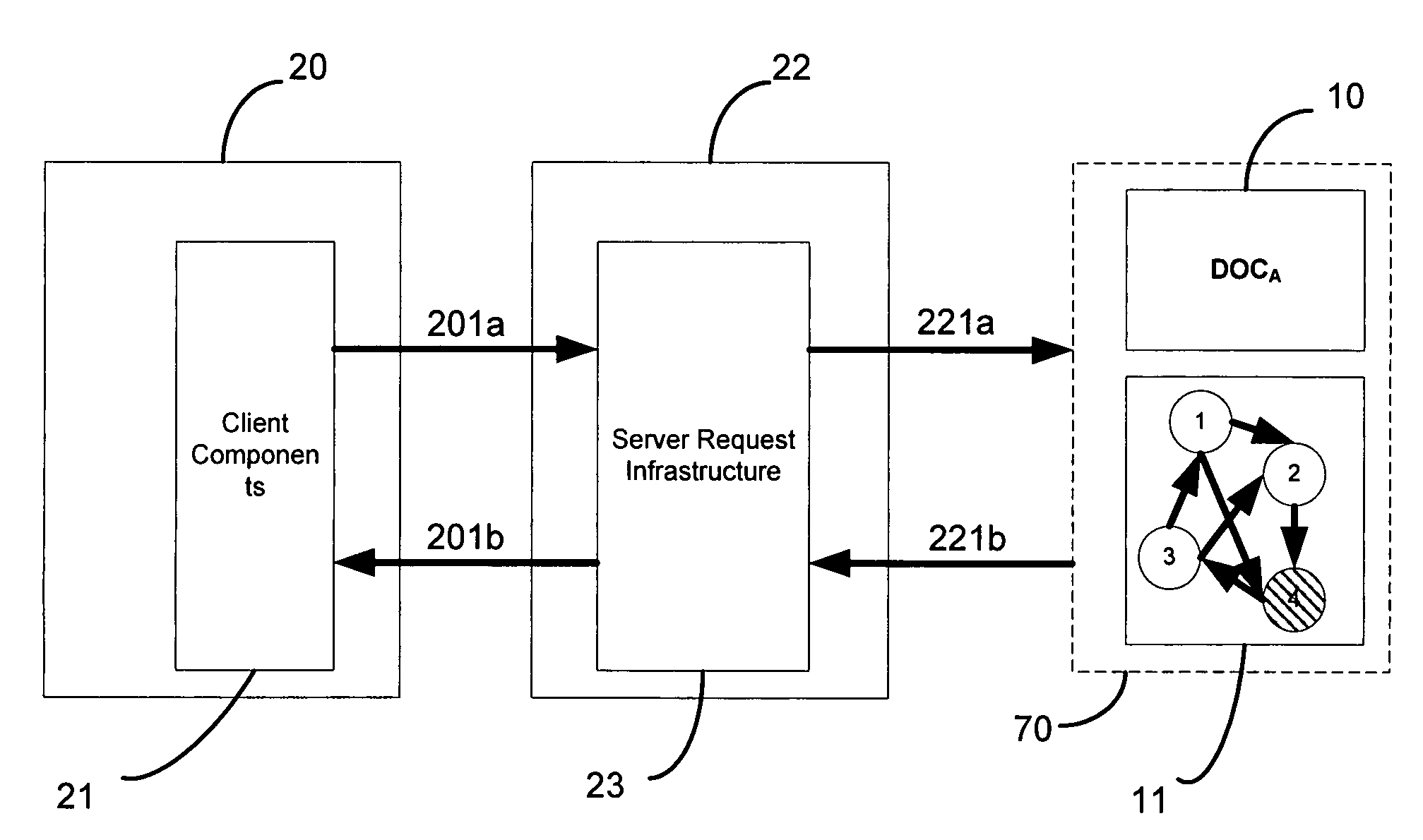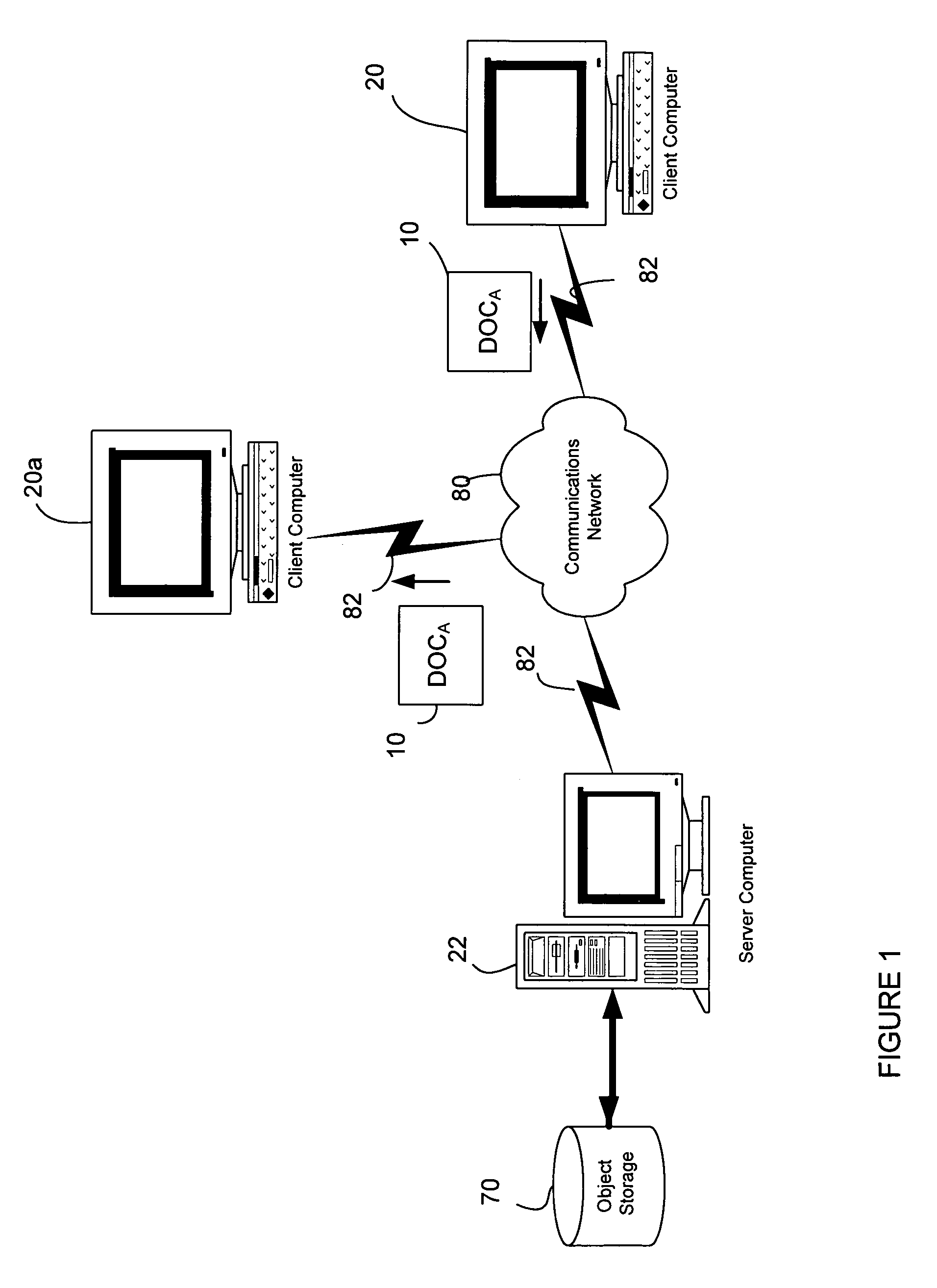Method for abstract state transitions without requiring state machine knowledge
a state machine and abstract state technology, applied in the field of abstract state transitions without state machine knowledge, can solve the problems of affecting bottom line costs, affecting organizational ability, minimizing top line profitability, etc., and achieves the effect of uniform interfaces and faster system upgrades
- Summary
- Abstract
- Description
- Claims
- Application Information
AI Technical Summary
Benefits of technology
Problems solved by technology
Method used
Image
Examples
Embodiment Construction
Overview
[0014]The present invention addresses the need for a system and method for managing collaborative access to objects. To that end, the system and method provide centralized control over objects and provide a platform wherein actions to be performed on an object are based on the current state of the object and valid transitions from those states. The valid states are maintained on a per-object basis and can be controlled based on the permissions granted to the user.
Exemplary Operating Environment
[0015]The present invention is preferably deployed in a network environment, particularly where that network is an Internet or Intranet environment. The term “Internet” is an abbreviation for “Internetwork,” and refers commonly to the collection of networks and gateways that utilize the TCP / IP suite of protocols, which are well-known in the art of computer networking. TCP / IP is an acronym for “Transmission Control Protocol / Internet Protocol.” The Internet can be described as a system o...
PUM
 Login to View More
Login to View More Abstract
Description
Claims
Application Information
 Login to View More
Login to View More - R&D
- Intellectual Property
- Life Sciences
- Materials
- Tech Scout
- Unparalleled Data Quality
- Higher Quality Content
- 60% Fewer Hallucinations
Browse by: Latest US Patents, China's latest patents, Technical Efficacy Thesaurus, Application Domain, Technology Topic, Popular Technical Reports.
© 2025 PatSnap. All rights reserved.Legal|Privacy policy|Modern Slavery Act Transparency Statement|Sitemap|About US| Contact US: help@patsnap.com



